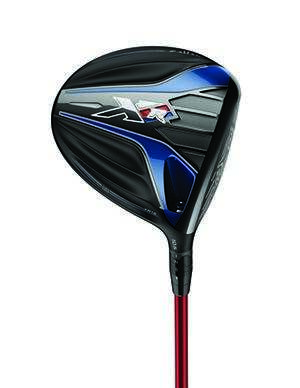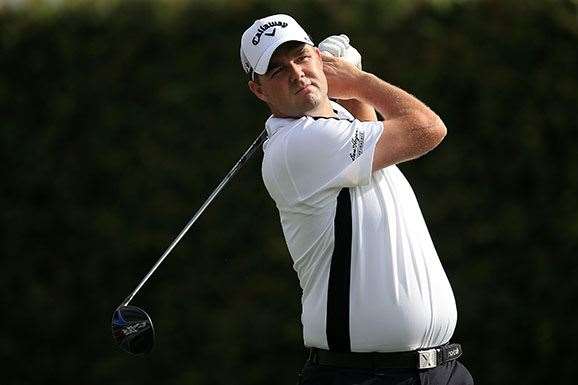The options for new drivers are plentiful and glorious, but separating the technology from the playability isn’t always easy. Here’s a guide to the latest drivers – and what’s driving them.
A curling putt that drops at perfect pace or a crisply struck pitch shot might earn a nod of approval from your playing partners, but nothing widens eyes and raises eyebrows like a powerful drive boomed way down the fairway.
The driver is king, and its reign is stronger than ever, even at club level, in this turbo-charged era of modern golf. Everyone wants to hit the ball farther and today’s technology is all but guaranteeing you can. Features such as carbon composite crowns and titanium cup faces coupled with technology like Speed Pockets, Action Mass and HyperFlight Faces help even modest swingers squeeze every last metre from their tee shots.
The research and development is as instructive as it is impressive. Some engineers are turning to nature for inspiration and insights. Part of the design of Ping’s new G driver, for instance, stemmed from a close-up photograph Ping chairman and chief executive John Solheim took of dragonfly wings. Others look to complementary industries. Callaway’s XR 16 driver drew upon the learnings of Boeing’s aerodynamics experts, for example.
What each one strives for is the versatility to generate ball speed for all through ideal launches. You might be a fast swinger who spins the ball too much or a slow swinger with not enough loft to generate the requisite carry to match your clubhead speed. Both situations – and each one in between – have a solution when the right driver is coupled with the right setup. The shaft, so often thought of as the ‘engine’ of the golf club, retains a vital role, but more than ever the various clubhead adjustability settings play their part, effectively allowing golfers to mask virtually any swing flaw. It’s not a stretch to suggest the most important development in the driver realm in recent years is the handy, pocket-sized tool that lets you toggle between settings.
Yet this relatively new aspect to modern drivers provides the playability and changeability average golfers crave. Behind those, however, are space-race-like advances in technology that are utterly mind-blowing when golfers stop to consider the objective of all this R&D is to propel a little white sphere a few more metres along the cut grass. But those are precious, precious metres.
 PHOTO: Donald Miralle/Getty Images.
PHOTO: Donald Miralle/Getty Images.IN LAYMAN’S TERMS
The jargon can be baffling but the technology is impressive once you understand a little more about it. Here are less confusing explanations of some of the key attributes found within the eight drivers featured here:
* Low centre of gravity: Exactly where your driver’s centre of gravity (CG) sits matters because it is a primary factor in determining launch and spin. A low CG increases dynamic loft (see explanation below) and decreases spin: a happy combination. A CG difference of even just a few millimetres can be profound, which is why slide weights and weight ports have become both popular and important. Generally speaking, a CG that’s low and towards the rear of the clubhead is optimal.
* Dynamic loft: The actual loft delivered to the ball at impact. At equivalent measured lofts, a driver with a rearward CG will produce more dynamic loft and therefore launch higher than a driver with a forward CG. More loft produces more spin.
* Moment of inertia: Usually defined as the clubhead’s resistance to twisting, that is technically accurate but can lead to the belief that moment of inertia (MOI) plays a greater role in accuracy than is the case. A better definition is that MOI is a protector of ball speed. The higher the clubhead MOI, the more ball speed – and by extension distance – is preserved on balls struck somewhere other than the sweet spot.
 * Closure Rate or Dynamic Closure Rate: The rate at which the clubhead closes during the downswing. The further forward the CG, the slower the closure rate. Clubs with slower closure rates are generally described as being more workable; back CG designs with faster closure rates are more forgiving and can help mitigate a slice.
* Closure Rate or Dynamic Closure Rate: The rate at which the clubhead closes during the downswing. The further forward the CG, the slower the closure rate. Clubs with slower closure rates are generally described as being more workable; back CG designs with faster closure rates are more forgiving and can help mitigate a slice.
MIZUNO JPX EZ
With a simple three-weight system, the JPX EZ allows golfers to dial-in their desired launch trajectory while maintaining its design for maximum forgiveness. Using a ten-gram Fast Track weight in one of three weight ports (draw, neutral or fade), the JPX EZ offers instant change to ball flight.
An optimised internal head for weight distribution low and deep in the head delivers extreme forgiveness and high, easy ball flight, while eight loft settings provide launch angles from 8.5° to 12.5°. Elsewhere, the engineered crown area eliminates the stiffer area around the clubface, allowing more flex for greater ball speeds and distance.
Specifications: Available in men’s right- and left-handed (women’s right-hand only) in lofts ranging from 8.5° to 12.5°. Standard are the Fujikura Orochi (in LL, L, A, R and S flexes) or Fujikura Six shafts (in A, R and S flexes). Custom shafts are also available.
Played by: Luke Donald (who also uses other drivers) and Chris Wood (pictured below).
RRP: $575. www.mizuno.com.au
 PHOTO: Andrew Redington/Getty Images.
PHOTO: Andrew Redington/Getty Images. CALLAWAY XR 16
CALLAWAY XR 16
Boeing’s aerodynamics experts played a crucial part in developing the XR 16 line from Callaway, collaborating with the golf company’s R&D team to concoct the XR 16 driver.
The unlikely union achieved a new threshold in ball speed. By pinpointing the size and placement of the re-engineered Speed Step Crown, engineers saved weight and lowered drag, resulting in an increase in clubhead speed and ball speed. The driver’s extreme forgiveness was accomplished thanks to the larger, high moment-of-inertia shape with a stretched crown, and a lower and deeper centre of gravity.
Also available are the alternative XR 16 Pro and XR 16 Sub Zero drivers.
Specifications: Available in right- and left-handed in adjustable lofts of 9°, 10.5° and 13.5°, with a Fujikura Speeder Evolution 565 shaft and four different flex options (L, R, S and X).
Played by: Phil Mickelson (Sub Zero model), Henrik Stenson, Branden Grace (Sub Zero), Marc Leishman (pictured below), Danny Lee and Stuart Appleby (Pro model).
RRP: $580; $650 for the XR 16 Pro; $680 for the XR 16 Sub Zero. au.callawaygolf.com
 PHOTO: Sam Greenwood/Getty Images.
PHOTO: Sam Greenwood/Getty Images. COBRA KING F6+
COBRA KING F6+
The King F6+ driver integrates an all-new CarbonTrac weighting system that features a sliding weight with five front-to-back, low centre of gravity positions that is encased in a carbon fibre shell. It replaces the heavier, titanium track structure used in the Fly-Z+ driver.
By creating additional discretionary weight through the use of a carbon fibre crown, new Ti 811 titanium body and forged face, Cobra was able to utilise an 18-gram weight on the sole to deliver an ultra-low centre of gravity and ball flights ranging from towering to penetrating for personalised distance and forgiveness.
The F6+ driver also has Forged E9 Zone Face technology, an internal feature that removes weight from key areas behind the face and in the hosel to increase the size of and speed off the sweet spot.
Specifications: Adjustable through MyFly 8 Technology to lofts of 9°, 9.5°, 10.5°, 11.5° and 12°, with a Matrix Black Tie 65M4 shaft and three different flex options (R, S and X). Available in right- and left-handed in three colours: Glass Black, Blue Aster or White Pearl.
Played by: Jonas Blixt and Bryson DeChambeau (pictured below).
RRP: $599. www.cobragolf.com.au
 PHOTO: Streeter Lecka/Getty Images.
PHOTO: Streeter Lecka/Getty Images. NIKE VAPOR FLY
NIKE VAPOR FLY
The Vapor Fly Pro driver utilises a familiar 460cc pear-shape clubhead to create a strong trajectory with low spin, yet on the inside the club has been finely tuned to help golfers such as Rory McIlroy perform at the highest level.
Distinguished by its bold blue crown with iconic Volt colour in the Compression Channel, the Vapor Fly has three key technologies that add up to fast ball speed, high trajectory and less spin: Flightweight Crown, HyperFlight Face and Compression Channel.
Specifications: Available in right- and left-handed (Vapor Fly Flex in right-hand only) in lofts of 8.5° to 12.5°. Standard shaft options are MRC Tensei 50 (Vapor Fly), MRC Diamana S+ 60 (Vapor Fly Pro) and MRC Diamana S+ Limited 60 (Vapor Fly Flex) with a variety of flex options (A, R, S, X and W).
Played by: Rory McIlroy (pictured below), Charl Schwartzel and Paul Casey.
RRP: $600 for Vapor Fly; $700 for Vapor Fly Pro; $850 for Vapor Fly Flex. www.nikegolf.com
 PHOTO: Streeter Lecka/Getty Images.
PHOTO: Streeter Lecka/Getty Images. PING G
PING G
A close-up photograph Ping chairman and chief executive John A. Solheim took of a dragonfly became the inspiration for the primary innovation in the G series driver.
He was intrigued by the wing structure and shared the photo with a group of engineers. Inspired by biomimicry, an approach to innovation that emulates nature’s time-tested patterns, they created Dragonfly Technology.
The complex exoskeleton design yields Ping’s thinnest (0.43-millimetre) and lightest crown to date, saving eight grams while creating an intricate and stable structure. The weight savings helped drive the centre of gravity lower and deeper than any Ping driver, increasing dynamic loft and elevating moment of inertia significantly for maximum distance and forgiveness.
Researchers also studied the base flaps that minimise large-scale vortex shedding behind 18-wheel semi-trailers and integrated their learnings into the G drivers to improve aerodynamics and increase speed. Vortec Technology on the back of the club and turbulators on the crown contribute to reducing drag 37 percent in the impact zone, yielding greater clubhead speed and ball velocity.
Specifications: Available in right- and left-handed in lofts of 9° and 10.5°, with Alta 55, Ping Tour 65 or Ping Tour 80 shafts in three flex options (R, S and X). An additional shaft option, TFC 80D, offers lite and soft-regular flexes.
Played by: Bubba Watson, Louis Oosthuizen (LS Tec model, pictured below), Lee Westwood (LS Tec) and Hunter Mahan.
RRP: From $700. www.ping.com
 PHOTO: Sam Greenwood/Getty Images.
PHOTO: Sam Greenwood/Getty Images. SRIXON Z 355
SRIXON Z 355
Srixon’s Z 355 driver was designed to create huge distance through a heavier head, which goes against the grain of many drivers but makes sense in the game-improvement domain. More weight in the head helps keep the club on-plane and builds momentum for the strike.
The Z 355 features ‘Action Mass’ technology, which combines the higher head weight (211 grams) with an ultra-high balance point shaft to increase ball speed and promote a more consistent, stable swing for players seeking maximum distance and forgiveness.
It has a 450cc clubhead with ‘QTS Adjustability’, which offers 12 unique settings for loft, lie and face angle. A fast and powerful titanium cup face creates an even larger sweet spot for increased consistency and distance off the tee.
Specifications: Fitted with a Miyazaki Jinsoku graphite shaft, the Z 355 is available in men’s lofts of 9.5°, 10.5° and 12° (10.5° for left-handers only) and women’s lofts of 10.5°, 12° and HL.
Played by: As this is Srixon’s game-improvement model, it doesn’t have a Tour following.
SRP: $500. www.srixon.com.au
 TAYLORMADE M2
TAYLORMADE M2
At first glance, the M2 driver looks like a clone of its predecessor, the M1. The seven-layer carbon composite crown with its distinctive white and black colouring returns, but on and inside the sole there are differences, both subtle and significant, that place forgiveness at the core.
A five-gram weight saving within the crown was moved to the sole, resulting in a centre of gravity that’s 26 percent further back than M1 when the adjustable weight was set in the rear position.
This relocation helps achieve ball speed and maximum forgiveness, raising the moment of inertia on off-centre drives. Likewise, TaylorMade’s “Speed Pockets” return with the M2 to generate more face flex. And in this era of adjustability, the M2 steps back from the M1’s twin changeable slide weights and retains only the 12 different Loft Sleeve positions.
Specifications: Available in men’s right- and left-handed (women’s right-handed only) in lofts of 9.5°, 10.5° and HL (plus women’s lofts of 10.5° and HL). Three shafts are available with various flex options: Fujikura Pro 50 (R, M), Fujikura Pro 60 (X, S) and TM Reax 45 (L).
Played by: Justin Rose and Sergio Garcia (pictured below).
RRP: $649, www.taylormadegolf.com.au
 PHOTO: Stacy Revere/Getty Images.
PHOTO: Stacy Revere/Getty Images.TITLEIST 915
Titleist’s 915 drivers feature a new Active Recoil Channel, Radial Speed Face and high-moment of inertia design to deliver lower spin and higher speed with exceptional forgiveness.
The twin 915D2 and 915D3 models benefit serious golfers of all swing speeds by delivering maximum distance while maintaining the high moment of inertia.
The proprietary Active Recoil Channel actively flexes at impact and recoils to launch the ball off the clubface with higher speed and lower spin.
The Radial Speed Face insert increases ball speed on off-centre hits for more distance and more consistent speeds across the clubface. Both 915 drivers were engineered with a precise, high-moment of inertia design with a low and deep centre of gravity for stability and forgiveness.
Specifications: Available in right- and left-handed in lofts of 7.5° (right-hand only), 8.5°, 9.5°, 10.5° and 12° (D2 only), with any one of six Aldila Rogue or Mitsubishi Diamana shafts in a range of flex options.
Played by: Jordan Spieth, Adam Scott (pictured below), Jimmy Walker (all D2), Byeong-hun An and Bernd Wiesberger (both D3).
SRP: $679. www.titleist.com.au
 PHOTO: Sam Greenwood/Getty Images.
PHOTO: Sam Greenwood/Getty Images.Related Articles

2025 Christmas Gift Guide

Game changers: the best irons designed to help your game












